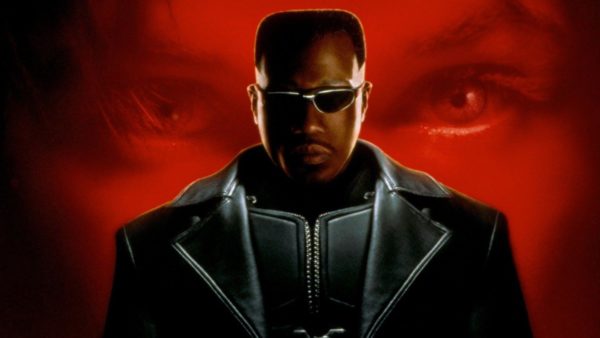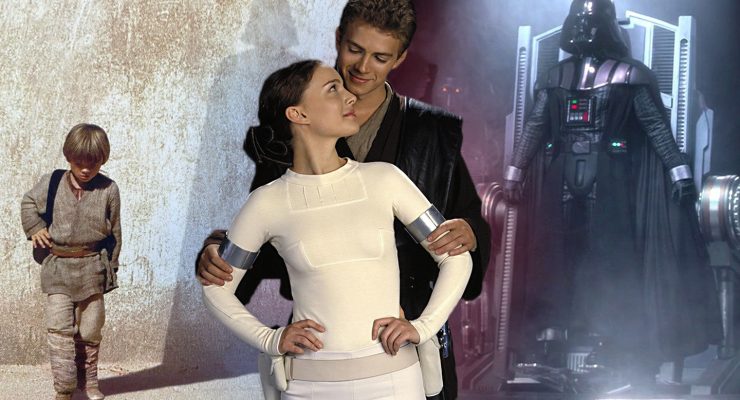Tom Jolliffe looks back on three key sci-fi films at the end of the last century – Blade, Dark City and The Matrix…
Towards the tail end of the 20th Century, sci-fi cinema was in something of a rut. A plethora of films were being made, but with a few exceptions, everything seemed to be either bombing or bad. It was very rare to get financially successful and decent, an exception being Terminator 2: Judgment Day. In the mid 90’s there was a rise in popularity for the big disaster epic, like Independence Day and Armageddon. Fun, cheesy, but not what you might call cornerstone films or visionary. Elsewhere, films like Tank Girl and Johnny Mnemonic were failing to light up box office or critics.
Step forward to 1998/99. Three films emerged with several things in common. A penchant for dark visuals, lots of leather, black clothing, shades (in the case of two) and a messianic central character. Additionally these were three films which had really great opening thirds. Blade, the film that really seemed to kick off the mainstream success of Marvel, has probably the best opening 40 minutes of any Marvel film. It’s crazy good. The film then loses a grip on proceedings with too many logic jumps (vampires wearing sun lotion) and a finale that doesn’t quite work, but regardless, it really did capture an audience and become iconic. Blade is a key film that paved the way for much of what has been most successful in cinemas this last decade. Not only that, but it made a comic book film aimed at adults, and managed to achieve big box office numbers. At least for its time too, it was cool. The costuming, the martial arts choreography and a techno heavy soundtrack. Some of it has dated of course, but at the time, Blade was badass.

In the central role, Wesley Snipes is half man, half vampire. All the strength, and without the weakness against sunlight. He’s key to the plans of the villain and releasing a blood God. Blade’s sacrifice will unleash an all powerful world ending figure. His unique gifts make him special. Within Blade too lies the possibility of curing vampirism. The visuals are great, Snipes is broodingly badass and the action really did feel fresh at a time when the action genre was transitioning from the 80’s icons like Schwarzenegger and Stallone, to guys like Nic Cage becoming action heroes. Snipes though, like Van Damme, Seagal, Lundgren (all of whom were well into career slump) was real deal with a genuine martial arts background (and one, much like early Seagal, felt distinct to him on screen).
1998 also saw the release of Dark City. The film was well received but commercially was a bit of bomb in its initial release. It was difficult to market, and lacking on an A-list star name as protagonist. In time Dark City became hugely popular upon being discovered in the home market and became influential in its own right. Here, this visually eclectic mix of time periods within the world itself brought to mind everything from Tim Burton to German expressionism, and vintage era noir films. Alex Proyas had already made the visually resplendent, The Crow, a big hit, and seemed to have a sizeable budget to work with in creating a faux world where human beings are kept under control (by aliens) via the illusion of free existence. Lives and memories finely tuned to each individual (and intermittently swapped), but like another film that shall be mentioned later, a figure will break free from the programming, with abilities to fight back against the oppressors. On a visual standpoint Dark City is glorious. A dark, dingy world of amber, greens and earthy tones in which our protagonist without memory and an increasing realisation of certain abilities, is enthralling.

From a visual standpoint (as well as thematically), Dark City has many things in common with The Matrix, which also had a very noir look in the opening. Indeed some sets from Proyas’ film were re-used in The Matrix. If Blade kicked open a few doors, and Dark City at least quietly influenced with its cult appeal, The Matrix had all these and an almost instantaneous pop culture boom. As the century closed, The Matrix, which tipped its cap to everything from Blade Runner, Metropolis and Terminator, was a phenomenon. Once again you have this messianic central figure who is the salvation for his race. Keanu Reeves firmly established himself as an action hero here as ‘the one.’
Like Blade, and Dark City, my favourite part of The Matrix was always the opening 30-40 minutes. Up until we start to see the truth behind the world. Whilst The Matrix is most iconic for what happens in the final third (where the predominant action focus has all those infamous bullet time moments that became quickly passe by the time it had been mimicked relentlessly in years following), it is those early shades of mystery and careful pacing I always really liked. Dark City was similar. Our protagonist is largely clueless to the extent of the world, though Neo of course questions things, he doesn’t know how deep the rabbit hole goes, so he’s discovering as he goes. Much like John in Dark City, who is slowly recapturing fragments of memory and discovering nefarious goings on in the world around. Maybe it’s the fact that the realities of the situation are never quite as good as the build up, is why I always found the openings better than the endings. A bit like Jaws which is never quite as chilling when you see the Shark up close and in greater detail. That being said though, where Blade sort of falls apart and loses grip of its ball like it’s pissing in butter, Dark City builds to an enjoyable and visually engaging conclusion, and The Matrix, is of course suitably spectacular.

It’s interesting with the aesthetics all running with a similar vibe. Lots of dark costumes. Blade and The Matrix all long trench coats, and/or leather, and a predilection for wearing shades indoors (in less than dazzlingly bright locales). Dark City had a retro look, but again, those long trench coats, and the villainous ‘strangers’ in particular, all decked out in black. Was this a particularly strong 90’s thing? It certainly was after The Matrix, going into the early 00’s, but there was something neo-retro about the looks. Dark City of course exists in a timeless faux world, perhaps differing from Blade, and to an extent The Matrix. The Matrix, whilst a construct, is still somewhat dated by its fashions and soundtrack. It’s interesting to look back on The Matrix now. It’s still great, but it’s got a distinct time stamp that has dated it a little, and ironically of course, in no small part due to its many imitators (and likewise, disappointing sequels). It’s not as timeless you’d say as Blade Runner, Metropolis, 2001 etc, because they were arguably more key milestones in the genre, but also less ‘of the time. I used to think it was a masterpiece. It’s great, but I think muted by time, and perhaps somewhat the direction the sequels took it (and they have certainly dated).
In the early decades of this century we’ve seen a mixed bag as far as sci-fi goes. Blade’s open door led to Spider-Man, to Iron Man, to the MCU nuclear blast. They started out somewhat refreshing as blockbuster entertainment, but lacked perhaps some of the depth you might have got in iconic sci-fi (which you’d include The Matrix in, with it’s deeply textured screenplay). Like many things, too much isn’t always the best and we’ve been over-saturated with the same film photocopied ad nauseam. With a few notable exceptions thanks to some engaging whimsy with James Gunn’s Guardians of The Galaxy, or Taiki Waititi’s Thor: Ragnarok.
The Matrix kind of set a bar for a mix of spectacle and depth that Christopher Nolan would take up the mantle on, particularly with Inception (and I’d assume, the upcoming Tenet). Occasionally overdone of course, and indeed the Wachowskis went over the edge with their sequels into a pit of pretentiousness. Dark City remains the least pop culturally significant, but a film I think which has a consistent legacy (I feel it grows in time or at least keeps parity), for the fact it still feels an entity unto itself. It feels unique. It’s very Dark City, too difficult to mimic, whereas that distinct visual appeal of the action in Blade and particularly The Matrix, was riffed to death. The visuals serve and never overwhelm the story in Dark City.
As cool and iconic as The Matrix is, it’s an exercise in pure indulgence (an enjoyable a.f one) but the adoration of John Woo, HK action cinema, Wushu films, Japanese cinema/manga/anime, is written all over the set pieces and aesthetics. It almost becomes vignettes of homage. Almost. It tows the line, but those lines have become more evident in the passing years (I am very very curious to see where Lana takes the new film). Dark City has its influences but they feel less showy, less like a ball game flasher. I think in the case of The Matrix, you could make that film without the bullet time interludes and martial arts breakaways. As iconic? Perhaps not, but they don’t always entirely serve the story, and occasionally feel gratuitous. Again, maybe just me, and maybe why that opening 40 minutes feels like such a great opening to a mystery sci-fi thriller.
Still, regardless of the respective lasting legacies, that triumvirate of films marks one of the strongest runs of the genre in recent history, and certainly ended the last century on a high. What are you thoughts on the three films? Let us know in the comments or on our Twitter page @flickeringmyth…
Tom Jolliffe is an award winning screenwriter and passionate cinephile. He has a number of films out on DVD/VOD around the world and several releases due in 2020/21, including The Witches Of Amityville Academy (starring Emmy winner, Kira Reed Lorsch), Tooth Fairy: The Root of Evil and the star studded action film, Renegades. Find more info at the best personal site you’ll ever see here.














